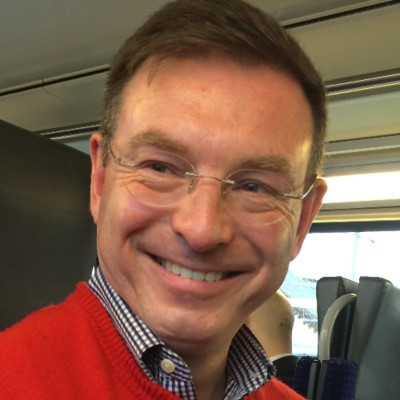
Dr Ian Knowles
Staff Tutor In School Of Physical Sciences
Biography
I grew up in St Helens (look ENE from Liverpool on a map) where I managed to pass enough A-levels to get into University to study mathematics. There I acquired an MA and an MMath which were followed by a PhD in theoretical particle pysics.
After University I continued in the academic world where I have worked at the University of Glasgow, Argonne National Laboratory (near Chicago, USA), CERN and the University of Edinburgh.
At some point I became a fully qualified teacher, specialising in secondary mathematics. Then for ten years I worked at Oxford University Press where I was the commissioning editor for maths books in secondary schools.
More recently I have worked as a staff tutor in the school of physical sciences.
Research interests
Initially my research focussed on an area of particle physics known as phenomenology which tries to bridge the gap between highbrow theory and experiment. For my PhD I developed a more complete description of the parton showers that appear as the unbiquitous jets seen in high energy particle collisions. This lead me to developing algorithms that can be used in a computer program, known as a Monte Carlo event generator, that aims to give a complete description of all the particles produced in a high energy collision. As a result of this work I became one of the early authors of the widely used HERWIG program.
After my PhD I branched out and started to study models of electroweak symmetry breaking. In particular models in which two, not one, Higgs doublet are used to give masses to all the particles in the standard model.
My work on the interpretation of experimenatl results somewhat naturally lead to me joining the ALEPH experiment which studied electron-positron collisions at the LEP collider - since replaced by the LHC. There my focus was on studies of the strong interaction.
Later still I joined NA48, another CERN experiment, which studied rare decays of long-lived neutral kaons. Interestingly a K0 can spontaneously change into its antiparticle a K0-bar but the rate of K0 to K0-bar is not quite the same as the rate of K0-bar to K0 and that small difference might help explain why our Universe is full of matter and not antimatter or nothing at all.
This was all rather in the past so my publications are a bit dated now but the curious can find a list on this database INSPIRE. To save you the bother I have picked out a few indicative ones.
- This is the sort of thing I was doing in my PhD. It is also my most cited (not necessarily best) single author paper.
IG Knowles; Spin Correlations in Parton - Parton Scattering; Nucl Phys B310 (1988) 571-588 - This is a guide to an update of the HERWIG program. You can tell it is widely used as it has well over 3500 citations
G. Corcella, I.G. Knowles, G. Marchesini, S. Moretti, K. Odagiri, P. Richardson, M.H. Seymour, B.R. Webber; HERWIG 6: An Event generator for hadron emission reactions with interfering gluons (including supersymmetric processes); JHEP 01 (2001) 010; e-Print hep-ph/0011363 - I like this one because it predicted the top quark and Higgs boson masses to within a few percent. Alas it uses the two Higgs doublets of supersymmetry which is no longer flavour of the month.
C.D. Froggatt, R.G. Moorhouse and I.G. Knowles, Supersymmetric renormalization group fixed points and third generation fermion mass predictions, Phys.Lett. B298 (1993) 356-362. - This is typical of the sort of thing I got involved in when I was a member of the ALEPH collaboration.
ALEPH collaboration, R. Barate, et al; The Topology dependence of charged particle multiplicities in three jet events; Z. Phys. C76 (1997) 191-199. - This is the flagship NA48 measurement; since up dated in Eur.Phys.J. C22 (2001) 231-254; ePrint hep-ex/0110019
NA48 Collaboration, V. Fanti et al; A new measurement of direct CP violation in two pion decays of the neutral kaon; Phys. Lett. B465 (1999) 335-348,1999; ePrint hep-ex/9909022
There is even a book I helped write with Gunther Dissertori (ETH, Zurich) and Michael Schmelling (MPI, Heidelberg); it is a bit specialised Quantum Chromodynamics: High Energy Experiments and Theory
Teaching interests
As a staff tutor I have been involved in several modules. On S111 amongst other things I did a minor rewite of Topic 10: Why does the sun shine? and I used to write the physics questions for the TMAs. I have also done a bit of writing for S227 (the new S217). In addition I have helped to run S382 (the old S384), SM380 and to a smaller extent SM381.
As an AL I have recently tutored on S217 Physics from classical to quantum and SM380 Quantum physics. Going further back I tutored on M820 Calculus of variations and advanced calculus and before that MS324 Waves, diffusion and variational principles.